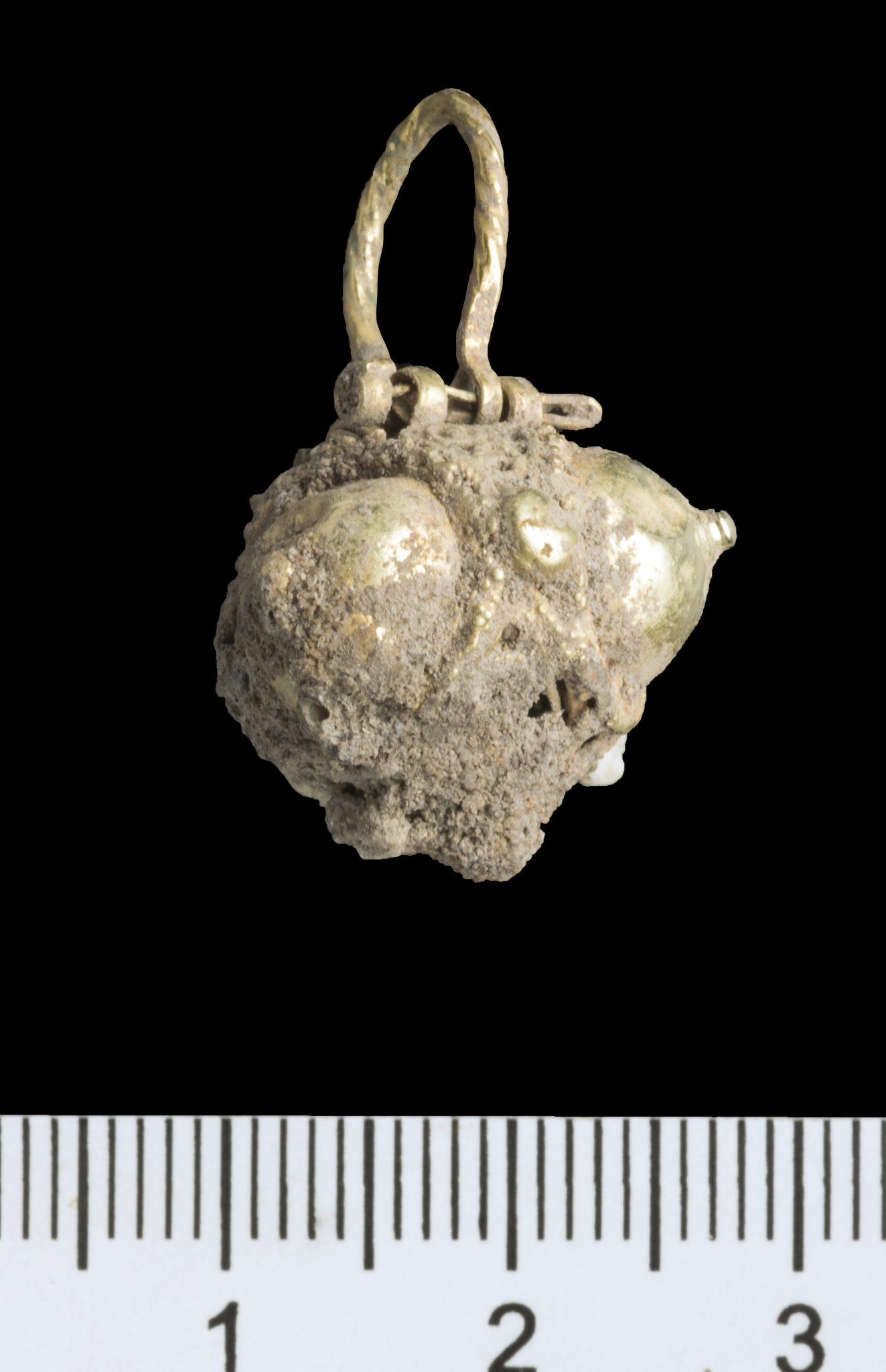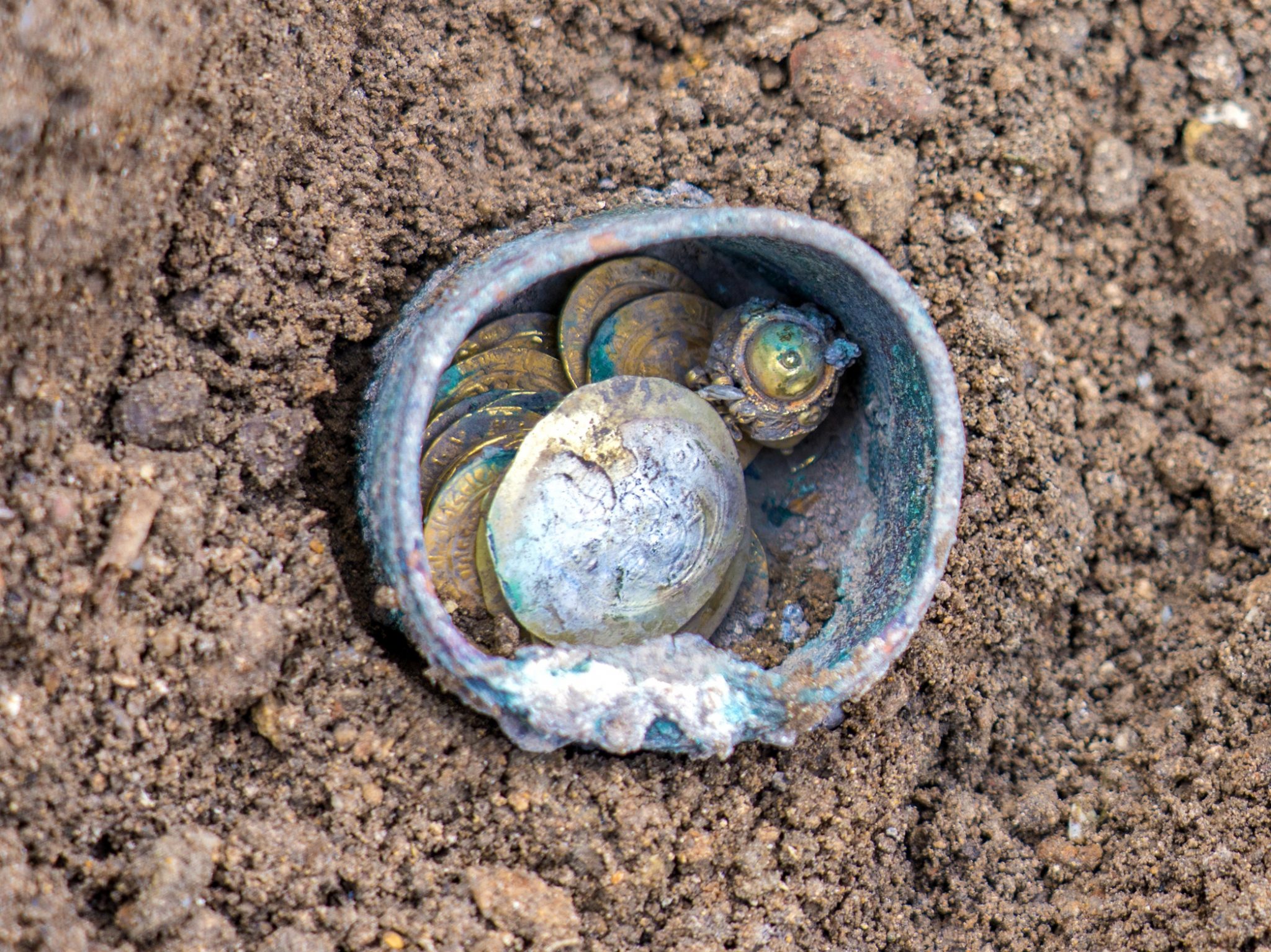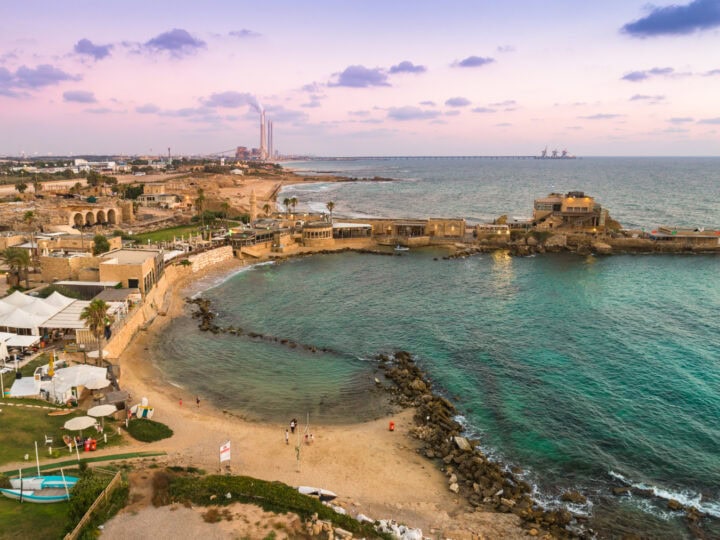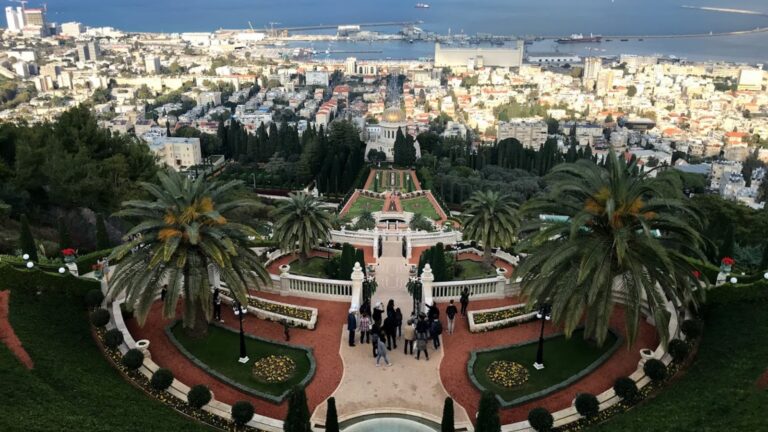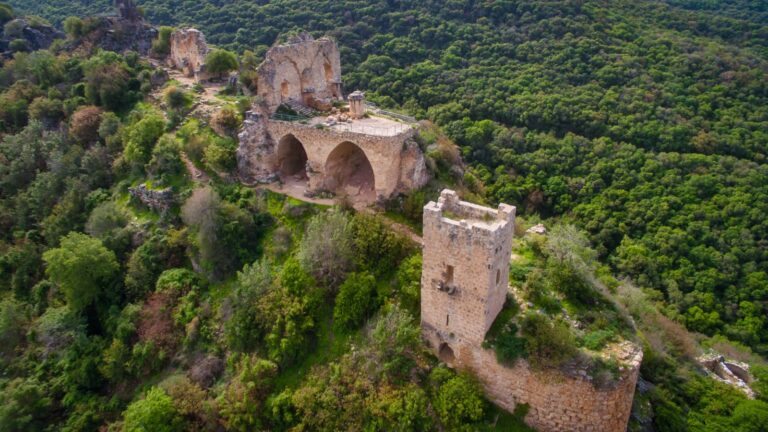Israeli archeologists have just discovered a unique cache of 900-year-old coins and a gold earring, giving whole new meaning to Hanukkah gelt.
The bronze pot containing 18 pieces of the local Muslim currency and six Byzantine gold imperial coins was hidden between two stones in the side of a well, and its burial hints at a time of great distress to its owners.

“The cache is a silent testimony to one of the most dramatic events in the history of Caesarea – the violent conquest of the city by the Crusaders. Someone hid their fortune, hoping to retrieve it – but never returned,” according to archeologists from the Israel Antiquities Authority.
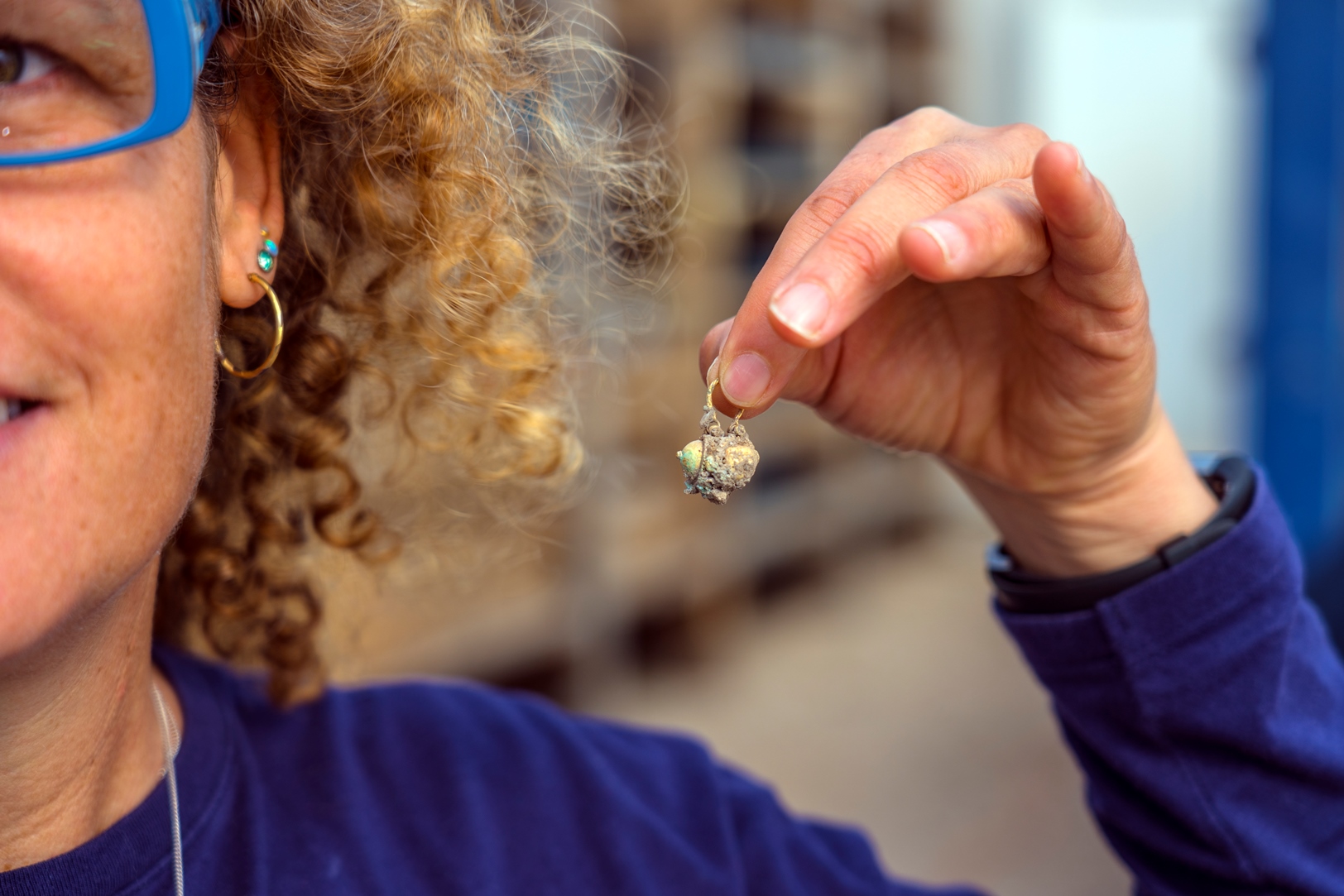
The excavation’s directors, Peter Gendelman and Mohammed Hatar of the IAA, explain that the majority of Caesarea’s inhabitants were massacred by the army of Crusader King Baldwin I in 1101.
“It is reasonable to assume that the treasure’s owner and his family perished in the massacre or were sold into slavery, and therefore were not able to retrieve their gold,” they say.
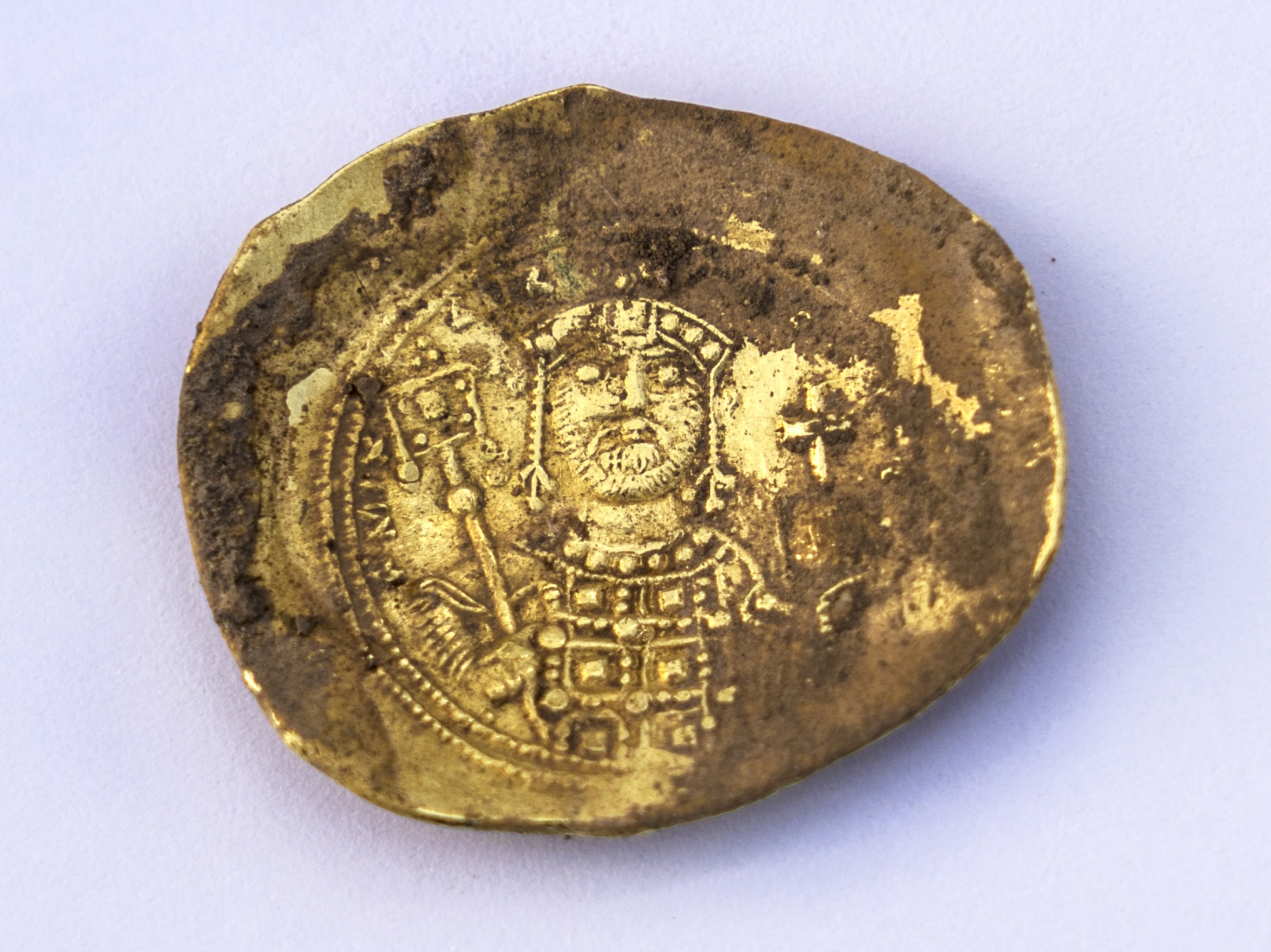
Whoever hid the coins must have been pretty wealthy, as the imperial gold coins are a rare find in the area.
“These coins did not circulate locally, and hint at contacts, possible trade relations between Caesarea and Constantinople during the period. One or two of these gold coins were the equivalent of the annual salary of a simple farmer, so it seems that whoever deposited the cache was at least well-to-do or involved in commerce,” says IAA coin expert Robert Kool.

The rare cache was unearthed near the site of two previous archeological finds – a pot containing gold and silver jewelry was discovered nearby in the 1960s, while a collection of bronze vessels was dug up there in the 1990s. Both are now exhibited at the Israel Museum in Jerusalem.
King Herod the Great built Caesarea over 2,000 years ago, naming it after Augustus, his Roman patron and emperor (Caesar).
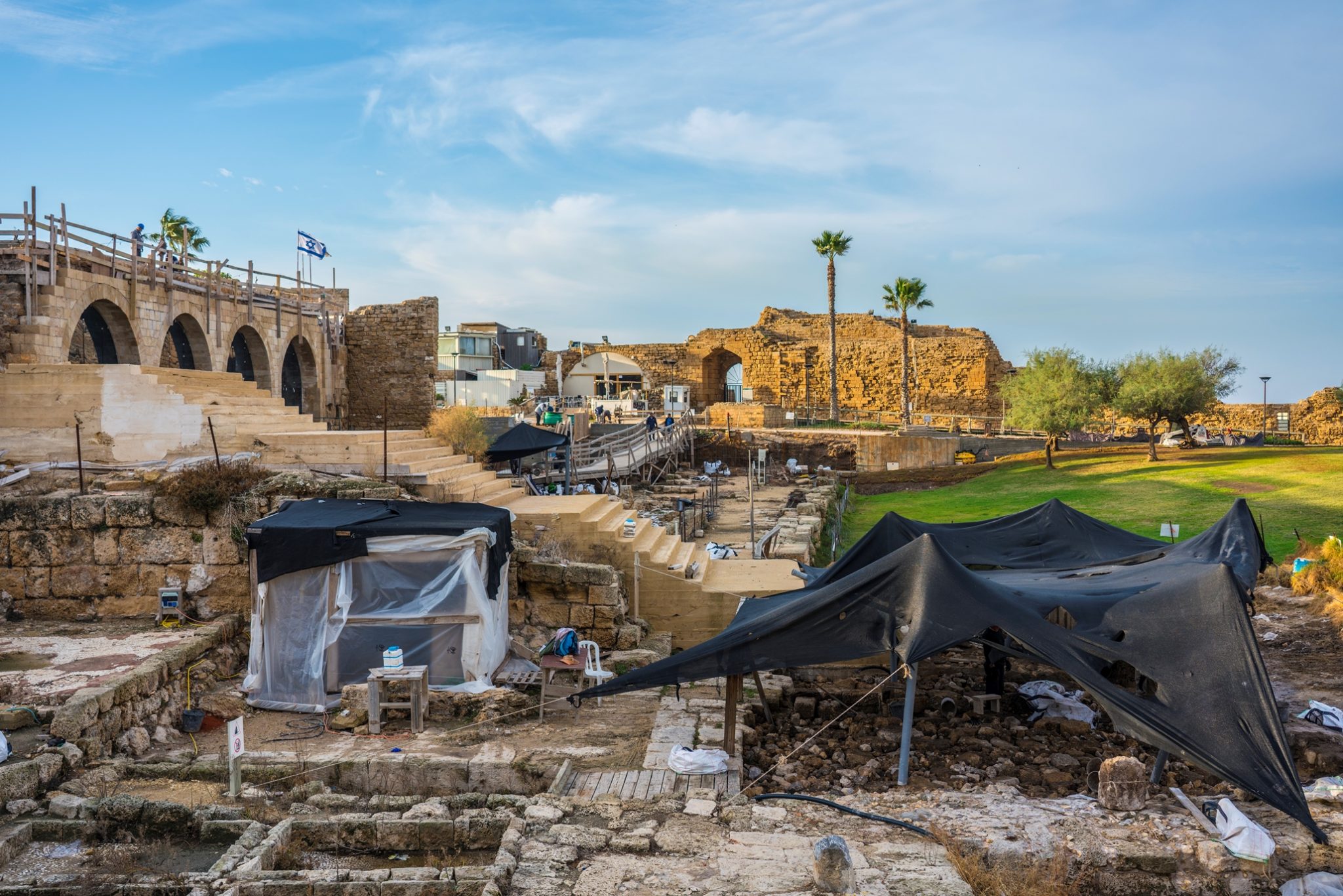
The port city continued to be an important trading post for hundreds of years. The ancient city was conquered twice by the Crusaders, but was ultimately destroyed by the invading Mamelukes.
The latest treasure was found during an extensive excavation and conservation project being carried out in Caesarea, sponsored by the Edmond de Rothschild Foundation.
